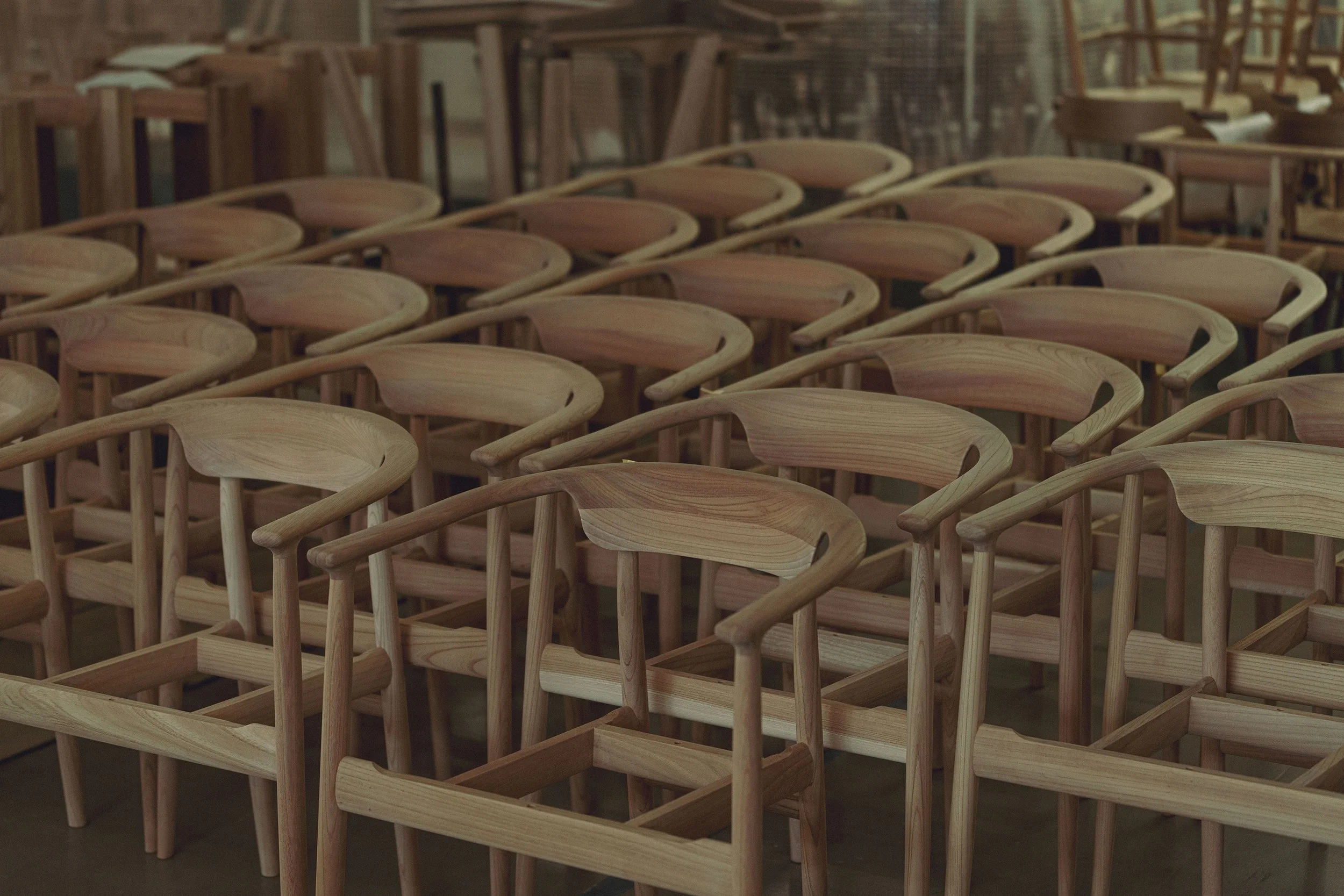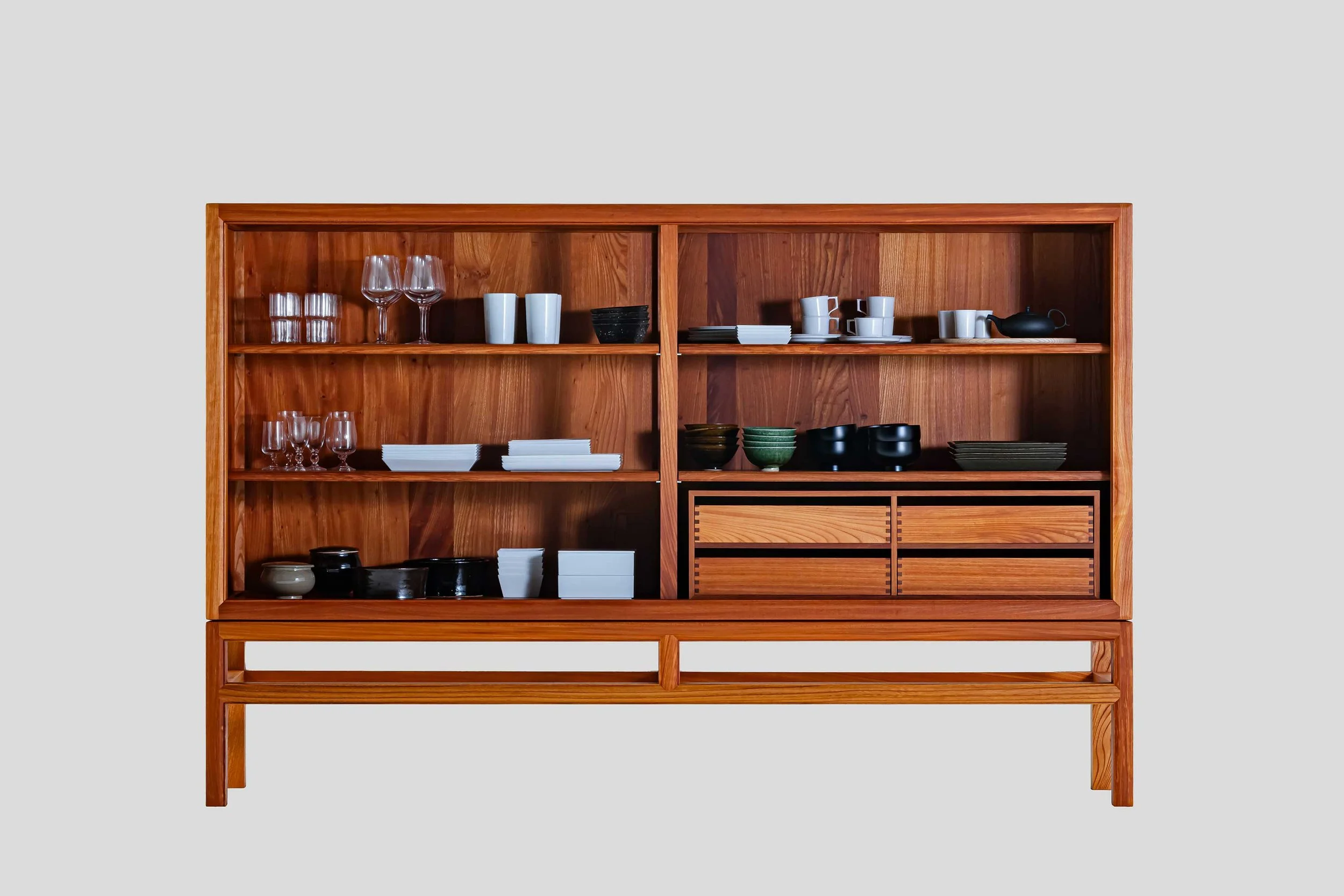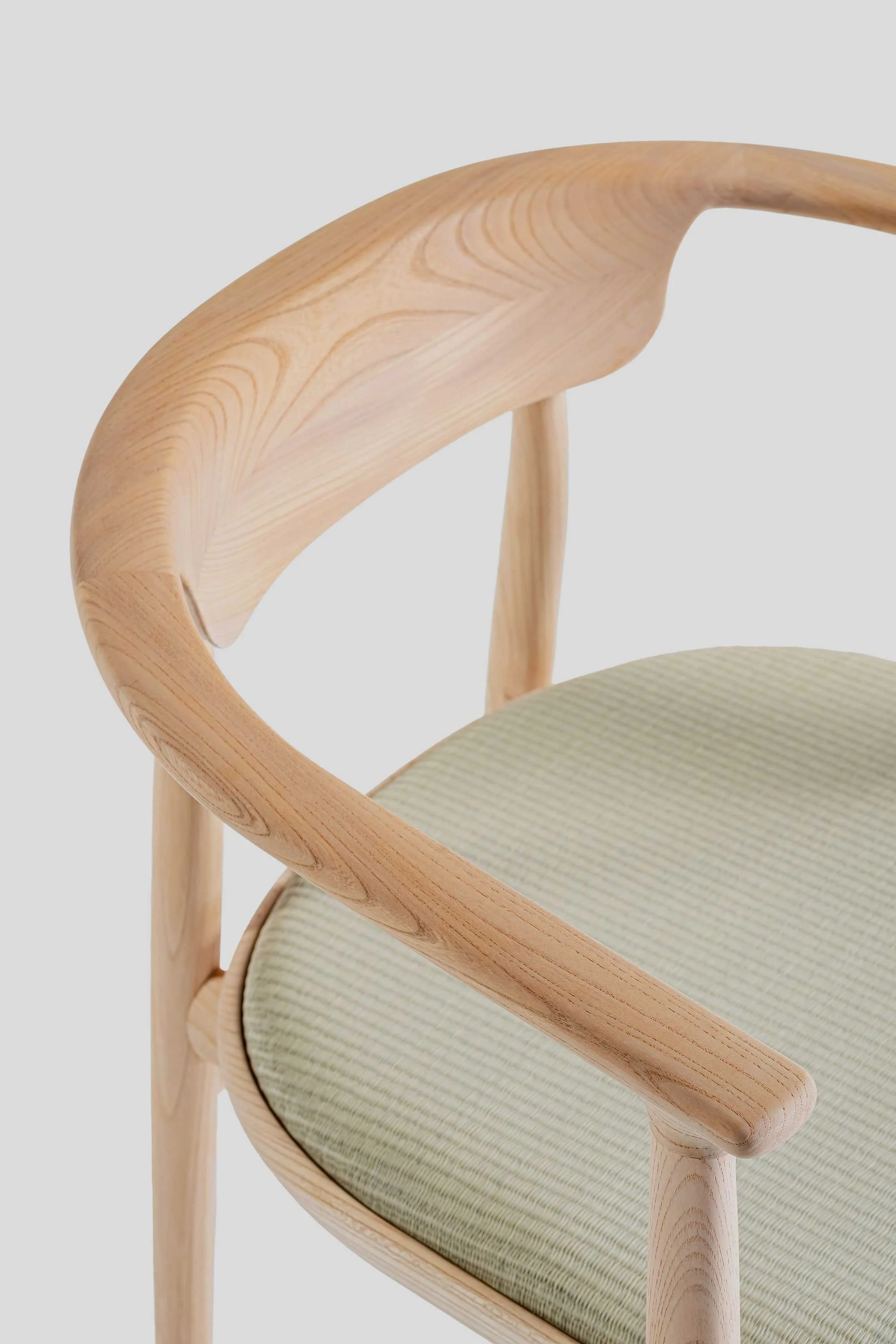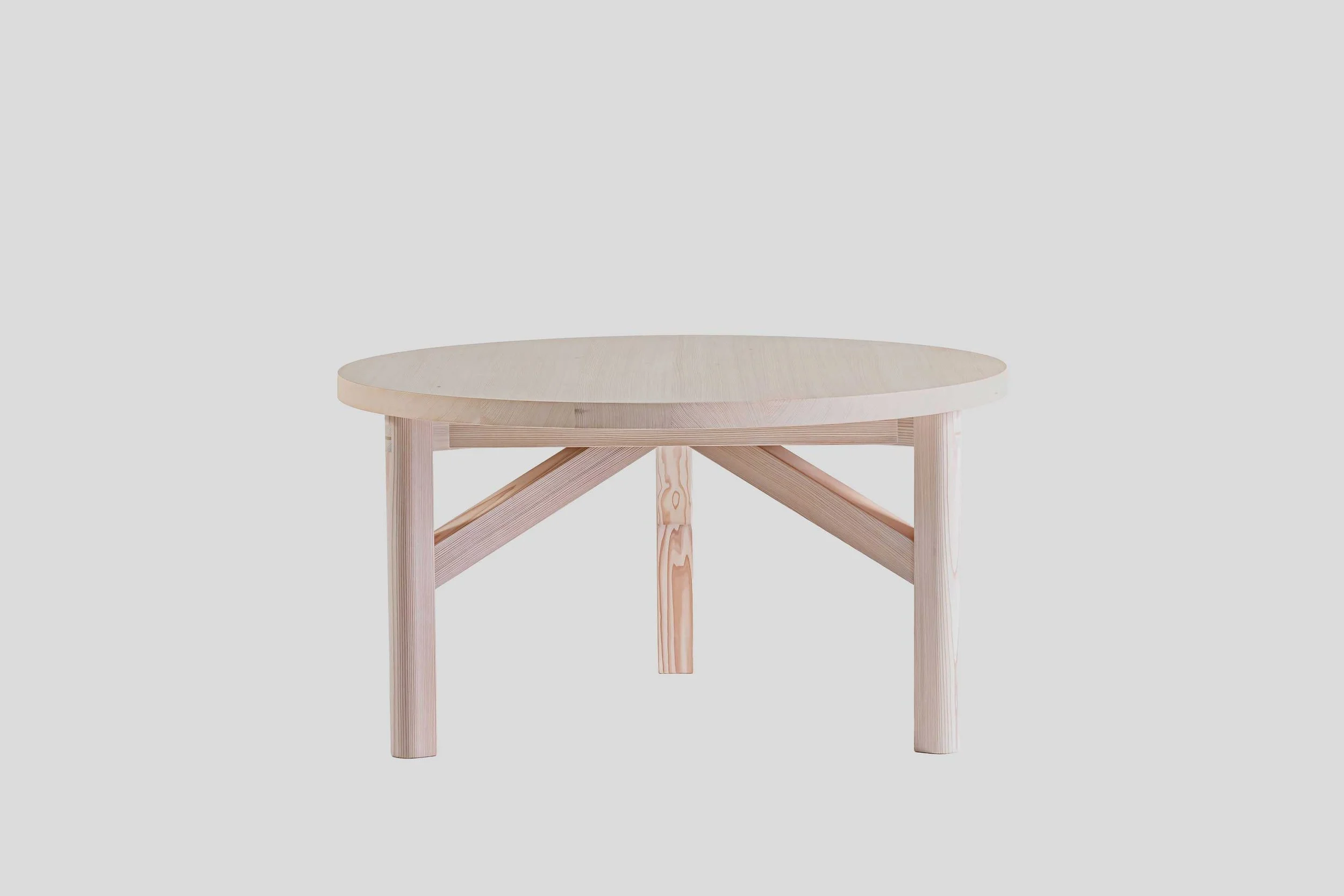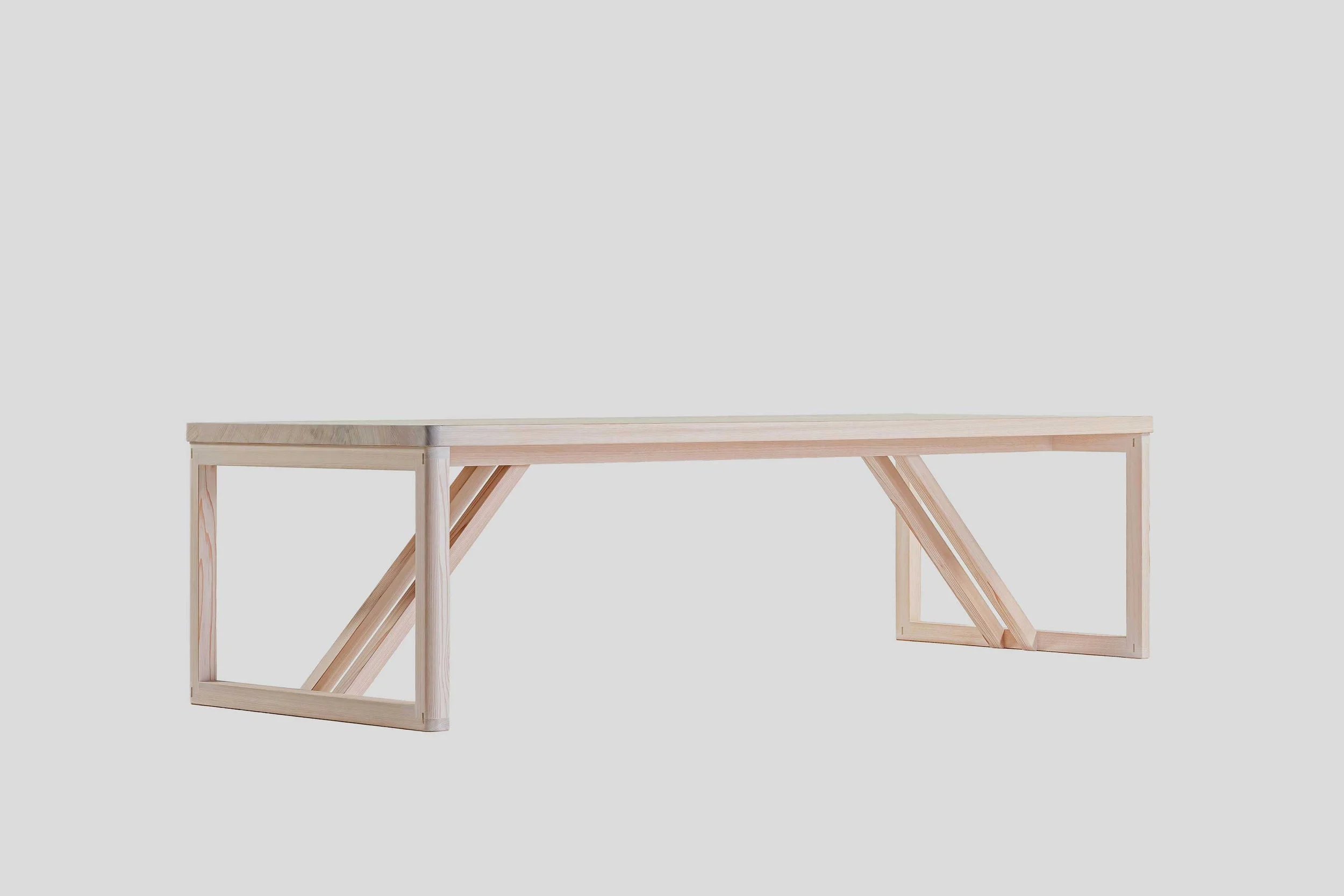Meet the Makers of Noma Kyoto’s Furniture
Japanese furniture firm Time & Style has created a new collection for Noma Kyoto that also retails. Designers OEO Studio tell us more
When OEO Studio’s Thomas Lykke and Anne-Marie Buemann were looking for a furniture partner to produce the chairs and tables for Noma’s second Kyoto residency, they looked to a longtime collaborator that shared the studio’s values. ‘The first time we discovered Time & Style, they were exhibiting in Stockholm. There was this brand that stood out from all the others: it was the attention to detail, you could sense the craftsmanship and the quality. It was like falling in love,’ explains Lykke.
The Copenhagen-based studio, with a growing roster of projects and partners in Japan, brought an outsider’s perspective along with deep reverence for Japanese craft and the nation’s hard-earned reputation as a country of makers, developing a furniture range truly of its place. ‘We’ve shown the designs to a couple of Japanese friends and the immediate response is that it feels Japanese, but it feels very Scandinavian, so it blends in a very nice, balanced way,’ says Buemann.
OEO Studio designed the first Noma Kyoto space for René Redzepi in 2023, and when he planned to return to the city this year, he asked Lykke and Buemann to reprise their role as designers of not just the space, but the furniture that inhabited it. ‘René thought it would be cool if we designed a collection from scratch, which is of course an extreme pressure for everybody, because there was such a short time to design it, develop it, prototype it and produce it. The whole time frame was crazy,’ says Lykke.
The result, however, belies the compressed process. Sculpted from zelkova wood, the Kouryu dining chairs (meaning ‘exchange’ in Japanese, referencing the coming together of the two cultures) present a distinctively Danish scale and form and come in both soaped and natural versions. Notably, the chairs feature padded tatami seats, making for a rather contemporary context in which to find such a traditional Japanese material. ‘You use tatami indoors, obviously for durability, it’s something you sit on, it’s always flat. Because it’s always been like that, you don’t challenge it; you don’t put a question mark. For us it was about that simple question mark. We said, can we do it round? Can we do it more three-dimensional? It was like, no, no, no, you cannot do it. It’s impossible, nobody has done it like that before,’ says Lykke. But the designers persisted, asking the question that if wood can be bent with steam, surely a softer material like grass could be moulded too. ‘There must be ways that we can force the material into a shape that we want it to be,’ he says.
With the added benefit of its natural scent, the choice to use tatami was fitting for a space inspired by the seasonality of the residence. Autumnal colours abound in the interior, with the zelkova offering a warmer, redder tint that might be found in a cedar or cypress chair. ‘We had the belief that we wanted to be local from a sustainability aspect, but also as Noma is paying tribute to Japanese cuisine and ingredients, we also wanted to pay tribute to Japan in the sense of materiality, resources and craftsmanship,’ explains Lykke. ‘For us, it’s interesting that you can take something so traditional and give it a new purpose.’
The Yoshino table collection, meanwhile, consists of both a long communal version intended for the private dining space, and circular tables for smaller groups of guests. Rather than zelkova, Time & Style produced these with sugi, a Japanese cedar, and gave them a light-toned, buttery-soft finish. The tables use the traditional Japanese joinery method of miyadaiku, meaning no nails are used. The collection is rounded out with the Keyaki cabinet. Named for its species of zelkova, the piece is a modified take on an existing Time & Style piece for Noma Kyoto originally designed for private museum collections, used to house ornamental objects, tableware, glassware and ceramics.
Lykke and Buemann are thrilled with the outcome, in particular with how guests engage with their creations. ‘A friend of mine dined there the other day and said “Wow, it’s amazing just to dine there obviously, but also to sit in the chair and at the tables and just touch the chairs. The funny thing is, I looked around the room and all the other guests were doing the same thing: touching the chairs”. That’s exactly what we want people to do, interact with the pieces,’ Lykke says. ‘We always say that you see with your hands as well, not just with your eyes. You see with your finger when you touch and that’s the more emotional connection. It helps people have a coherent experience,’ says Lykke.
Text by Jeremy Smart
Images by Mitsuru Wakabayashi






